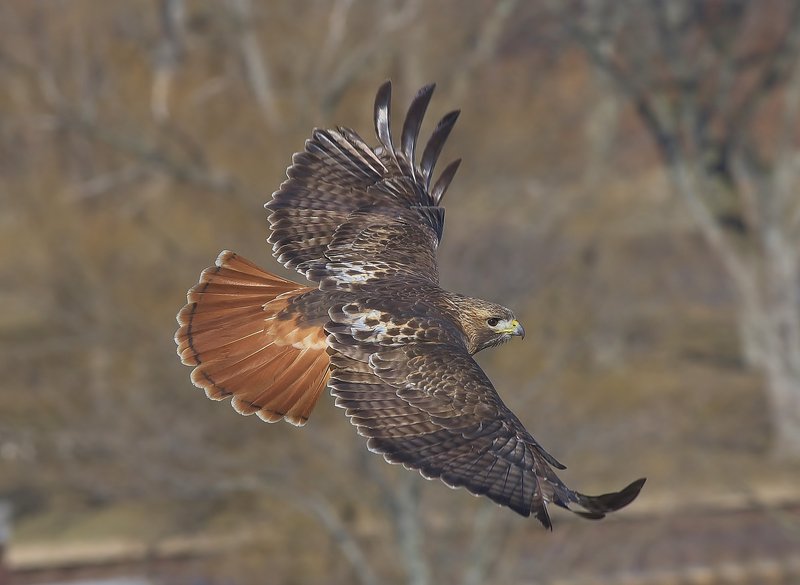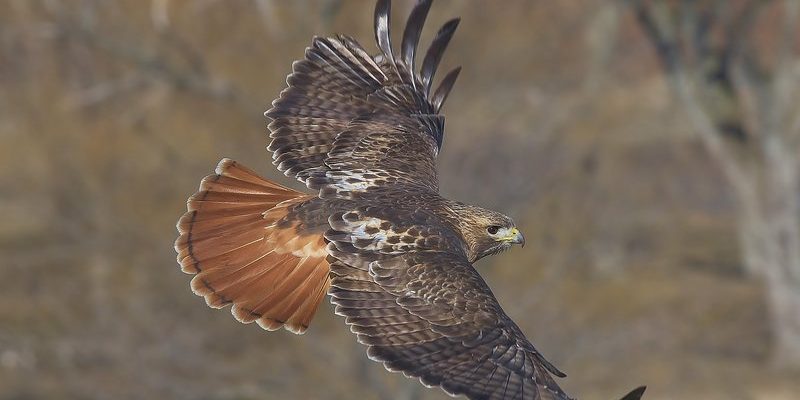
Let’s dive into the unique flying and hunting techniques of this majestic bird. We’ll explore how its physical features aid its flight, its preferred hunting strategies, and why these skills are essential for survival. Whether you’re an aspiring ornithologist or just someone who loves nature, you’ll soon appreciate the Red-Tailed Hawk’s unique abilities.
Understanding the Anatomy of the Red-Tailed Hawk
To appreciate how the Red-Tailed Hawk flies and hunts, let’s start by examining its anatomy. These birds are built for performance. Their large wingspan, which typically ranges from 3.3 to 4.8 feet, allows them to soar gracefully high in the sky. The wings are broad and strong, providing excellent lift and stability. This physical setup is similar to that of a glider, allowing the hawk to soar effortlessly while conserving energy.
Additionally, their powerful talons and sharp beaks play a crucial role in their hunting success. The talons are designed for gripping and slicing through prey. The beak, sharp and curved, is perfect for tearing flesh. This combination of features means that when a Red-Tailed Hawk spots its prey, it’s not just flying; it’s actively preparing to catch it.
Another interesting point is their vision. Red-Tailed Hawks have extraordinary eyesight—up to eight times sharper than ours. This acute vision enables them to spot small animals from great distances. So, when you see a hawk perched high up on a tree, it’s not just lounging; it’s scanning the landscape for potential meals.
The Art of Soaring: How Red-Tailed Hawks Fly
One of the most astonishing aspects of the Red-Tailed Hawk is its ability to soar. Soaring is a method of flight where the bird rides thermal updrafts, allowing it to gain altitude without flapping its wings much. Picture yourself floating on a warm breeze; that’s essentially what these hawks do. They’ll circle in the sky, using these rising currents to stay airborne for long periods.
This ability is practical for hunting. By soaring high, a Red-Tailed Hawk can cover vast areas while conserving energy. It can also survey the ground below, scanning for movement that might indicate potential prey. Hawks often take advantage of the sun’s warmth, especially on sunny days, to find those thermals. They typically rise a few hundred feet, making them seem almost like tiny specks against the backdrop of the blue sky.
Another technique they use is called kiting. This involves hovering in one spot while adjusting their position according to wind currents. Kiting allows them to stay stationary while observing their surroundings. If you’ve ever watched a kite flutter in the breeze, you can imagine how the hawk uses similar movements, ensuring it’s perfectly poised to catch sight of a small rodent scurrying below.
Hunting Techniques: The Strategy Behind the Capture
When it comes to hunting, the Red-Tailed Hawk employs a mix of patience and sudden explosive speed. Once it spots potential prey, like a rabbit or a squirrel, it shifts from soaring mode to stealth mode. This means they often will perch quietly on a branch, using their keen vision to identify targets. Here’s the thing: they’re not just waiting randomly; they’re calculating the best moment to strike.
Once the target is in sight, the hawk will launch into an incredible dive, often reaching speeds of up to 40 miles per hour. This move—called a stoop—is where they convert their height into speed. Imagine a rollercoaster hurtling down a slope; that’s the kind of acceleration the hawk achieves. The surprise and quickness of this attack make it hard for prey to react in time.
Red-Tailed Hawks are also known for their tactical approaches when hunting in pairs. When food is scarce or when hunting larger prey, they may work together, distracting and cornering it, increasing their chances of a successful catch. That’s teamwork in the bird world!
Adapting to Different Environments
What’s fascinating about the Red-Tailed Hawk is its ability to adapt to various environments. You might find them in forests, deserts, grasslands, or even urban areas. Their adaptability helps them utilize different hunting strategies based on where they live. For instance, in an urban setting, they may hunt pigeons or rats, while in a more rural area, small mammals like rabbits may be their primary targets.
In each environment, the hawk’s flying techniques play a crucial role. In open fields, they can use their soaring abilities to spot prey from great distances. In woodlands, however, they might rely more on short bursts of flight to navigate through trees and pursue prey.
You might also notice them using perches effectively in different terrains. A good perch—like a tall tree or a power line—gives them a vantage point to scout for food. It’s their lookout tower, and it can mean the difference between an empty belly and a successful meal.
Why Hunting Techniques Matter for Survival
The hunting techniques of the Red-Tailed Hawk aren’t just fascinating; they are essential for survival. Understanding how to fly efficiently and hunt effectively allows them to thrive in various ecosystems. Because they are at the top of the food chain, their hunting success affects the entire food web. When they control the population of small mammals, it helps maintain balance within the ecosystem.
These skills also determine their breeding success. A hawk that is effective in hunting is more likely to feed its young and ensure that they thrive, passing on those advantageous traits to the next generation. Their ability to adapt hunting techniques based on their environment can mean the difference between life and death, especially in the face of changing climates and loss of habitat.
As a result, birdwatchers and conservationists pay close attention to their behavior and population. Understanding their hunting patterns helps in conservation efforts, ensuring that these magnificent birds continue to soar through our skies.
The Irreplaceable Role of the Red-Tailed Hawk in Ecosystems
Red-Tailed Hawks are more than just aerial hunters; they play an irreplaceable role in their ecosystems. By controlling populations of rodents and other small mammals, they help prevent overgrazing, which can lead to habitat destruction. This balancing act is crucial, especially in areas where agriculture and wildlife intersect.
Moreover, their presence often indicates a healthy environment. When these hawks are thriving, it’s a sign that their prey is abundant and that the ecosystem is functioning well. Conservationists often use the health of raptor populations as a measure for environmental wellness.
You might be surprised to learn that the Red-Tailed Hawk faces threats from habitat destruction and declining prey populations due to urbanization and farming. This means understanding their hunting and flying techniques can also play a part in conservation efforts. Protecting their habitats ensures that these magnificent birds can continue to thrive and enchant us with their prowess.
In conclusion, the unique flying and hunting techniques of the Red-Tailed Hawk highlight the wonders of nature. From their incredible soaring abilities to their strategic hunting methods, these birds remind us of the beauty of adaptation and survival. Next time you’re out experiencing nature, keep an eye out for a Red-Tailed Hawk in the sky—you’ll appreciate what makes this bird such a formidable and fascinating creature.

